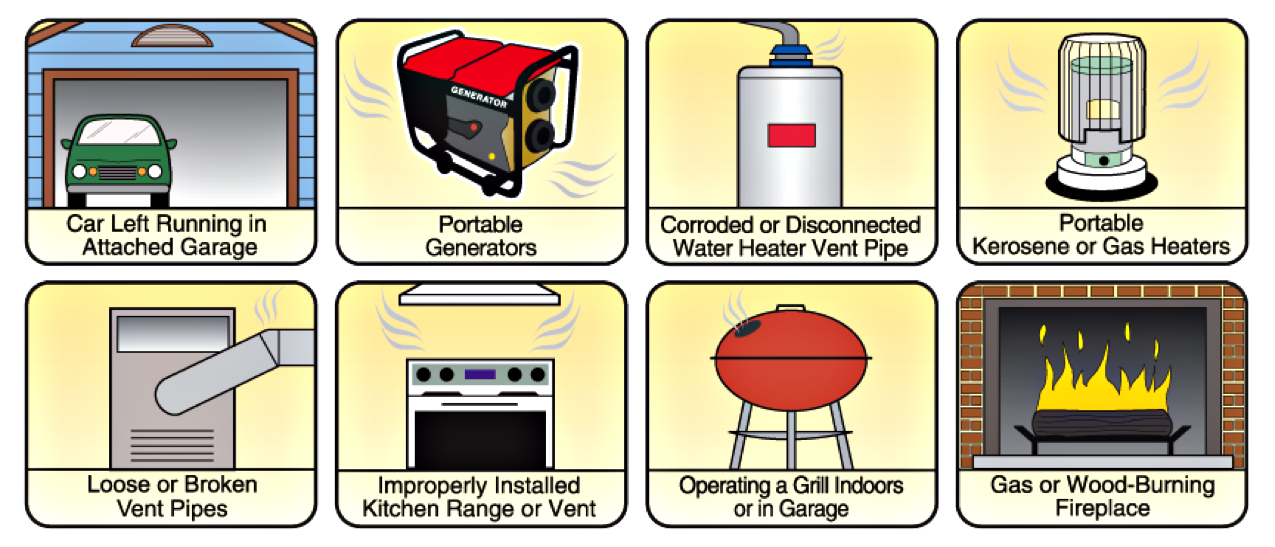Exposure to colourless and odourless carbon monoxide (CO) can cause flu-like symptoms such as headaches, nausea, dizziness, burning eyes, confusion, drowsiness and even loss of consciousness, without the elevated temperature associated with the flu. In severe cases, CO poisoning can cause brain damage and death. The elderly, children and people with heart or respiratory conditions may be particularly sensitive to CO. It can poison the body quickly in high concentrations, or slowly over long periods of time.
Carbon Monoxide (CO) is a by-product of incomplete combustion of fuel such as natural gas, propane, heating oil, kerosene, coal, charcoal, gasoline, wood, or other bio-fuels. This incomplete combustion can occur in any device that depends on burning a fuel for energy or heat.
Devices include but are not limited to home furnaces and wood stoves, automobiles left running in an attached garage, a portable generator operating near an open window or in the garage, an outdoor gas barbecue operated inside the house, a grill or kerosene heater that is not properly vented, or a fireplace chimney that is dirty or plugged. All may create unsafe levels of CO.
When these devices are properly installed, maintained and well-vented, the CO produced can be prevented from reaching unsafe levels in the home, garage, shop, etc.
CO alarms are readily available and reasonably priced. They monitor airborne concentration levels (parts per million) of CO over time, and sound an alarm when harmful levels are present. They are designed to sense low CO concentrations over a long period of time as well as high concentrations over a short period of time
We urge everyone to install CO alarms and install them following the manufacturers instructions.


